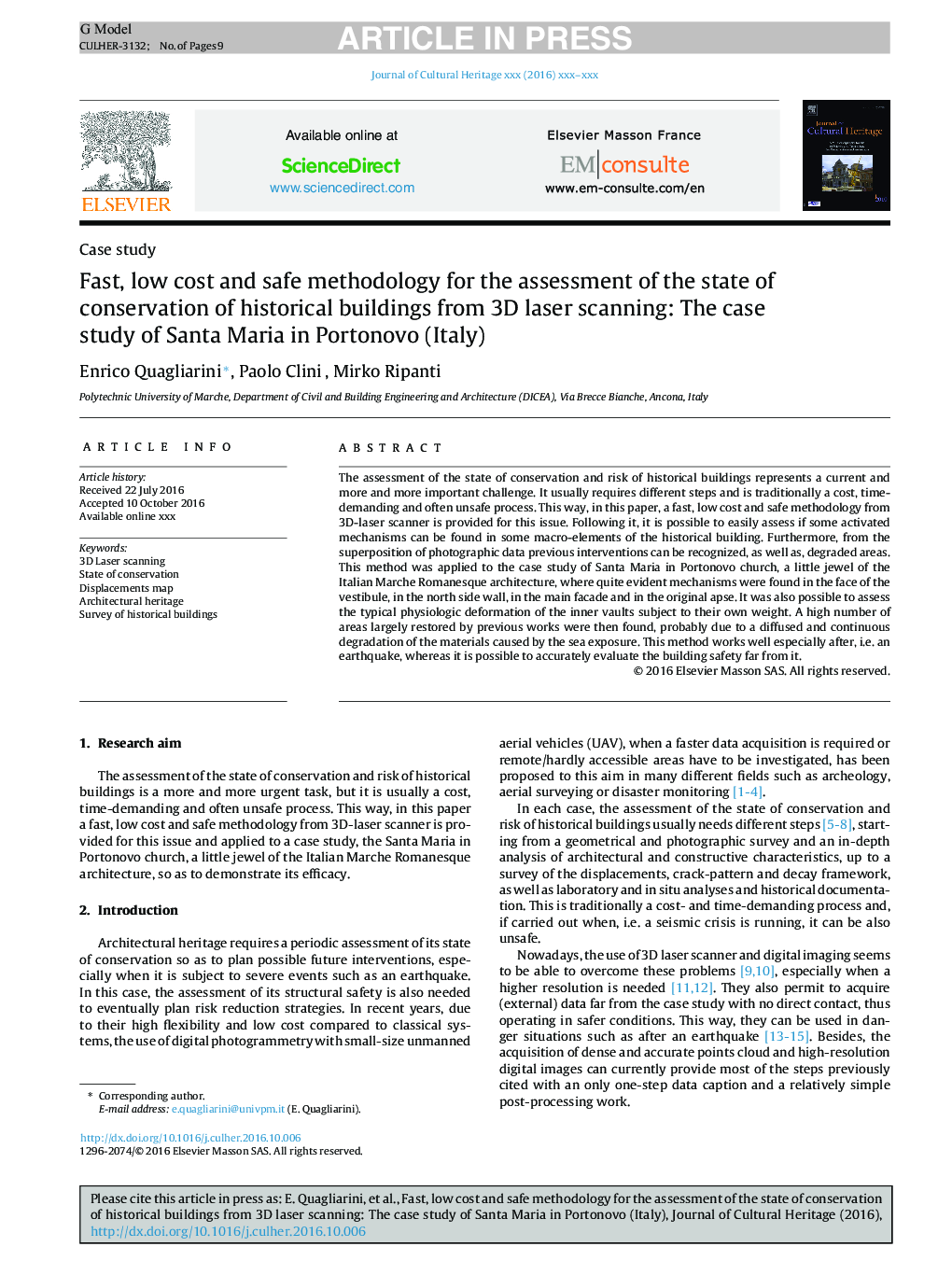| Article ID | Journal | Published Year | Pages | File Type |
|---|---|---|---|---|
| 5112685 | Journal of Cultural Heritage | 2017 | 9 Pages |
Abstract
The assessment of the state of conservation and risk of historical buildings represents a current and more and more important challenge. It usually requires different steps and is traditionally a cost, time-demanding and often unsafe process. This way, in this paper, a fast, low cost and safe methodology from 3D-laser scanner is provided for this issue. Following it, it is possible to easily assess if some activated mechanisms can be found in some macro-elements of the historical building. Furthermore, from the superposition of photographic data previous interventions can be recognized, as well as, degraded areas. This method was applied to the case study of Santa Maria in Portonovo church, a little jewel of the Italian Marche Romanesque architecture, where quite evident mechanisms were found in the face of the vestibule, in the north side wall, in the main facade and in the original apse. It was also possible to assess the typical physiologic deformation of the inner vaults subject to their own weight. A high number of areas largely restored by previous works were then found, probably due to a diffused and continuous degradation of the materials caused by the sea exposure. This method works well especially after, i.e. an earthquake, whereas it is possible to accurately evaluate the building safety far from it.
Related Topics
Physical Sciences and Engineering
Chemistry
Physical and Theoretical Chemistry
Authors
Enrico Quagliarini, Paolo Clini, Mirko Ripanti,
